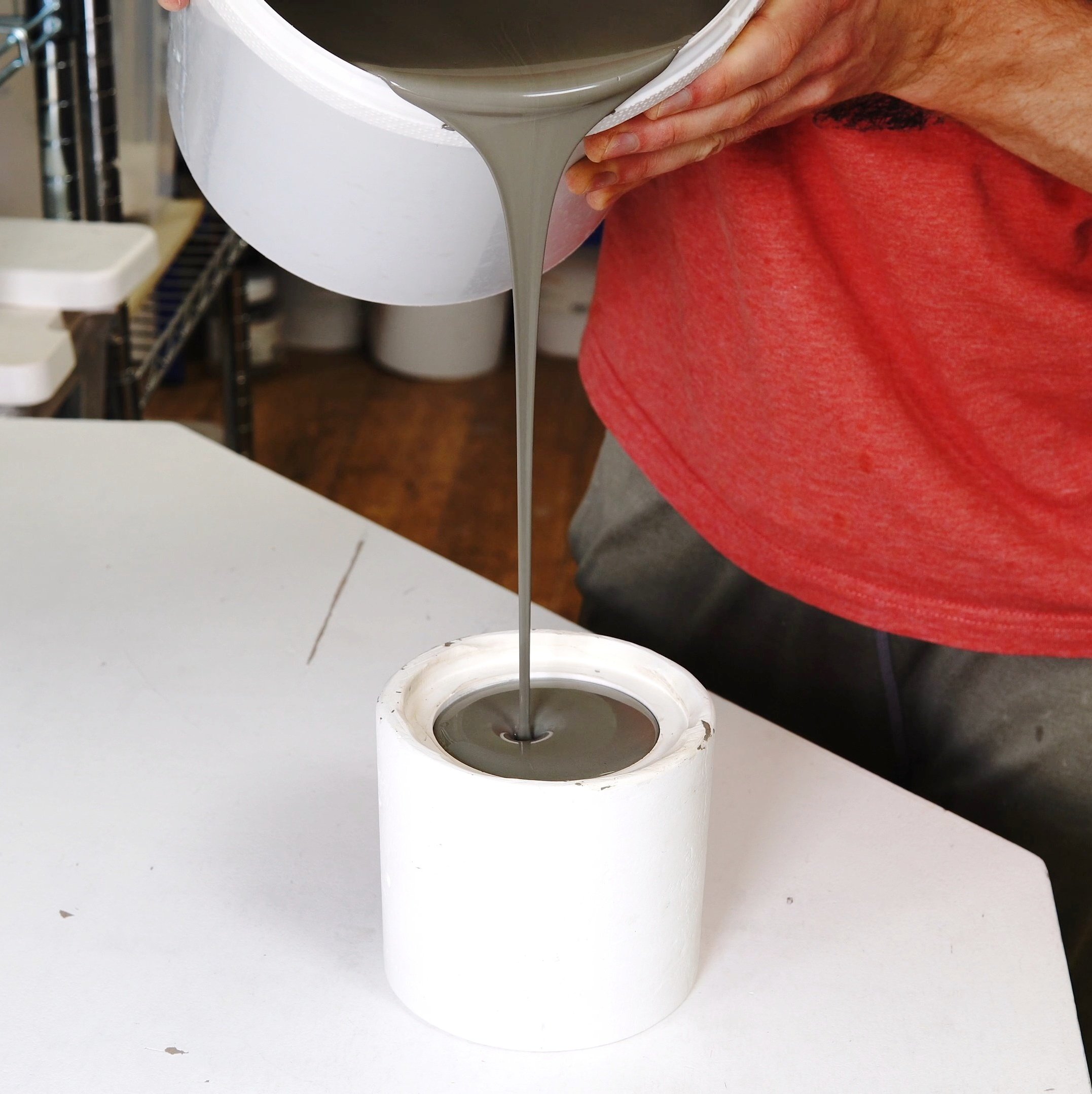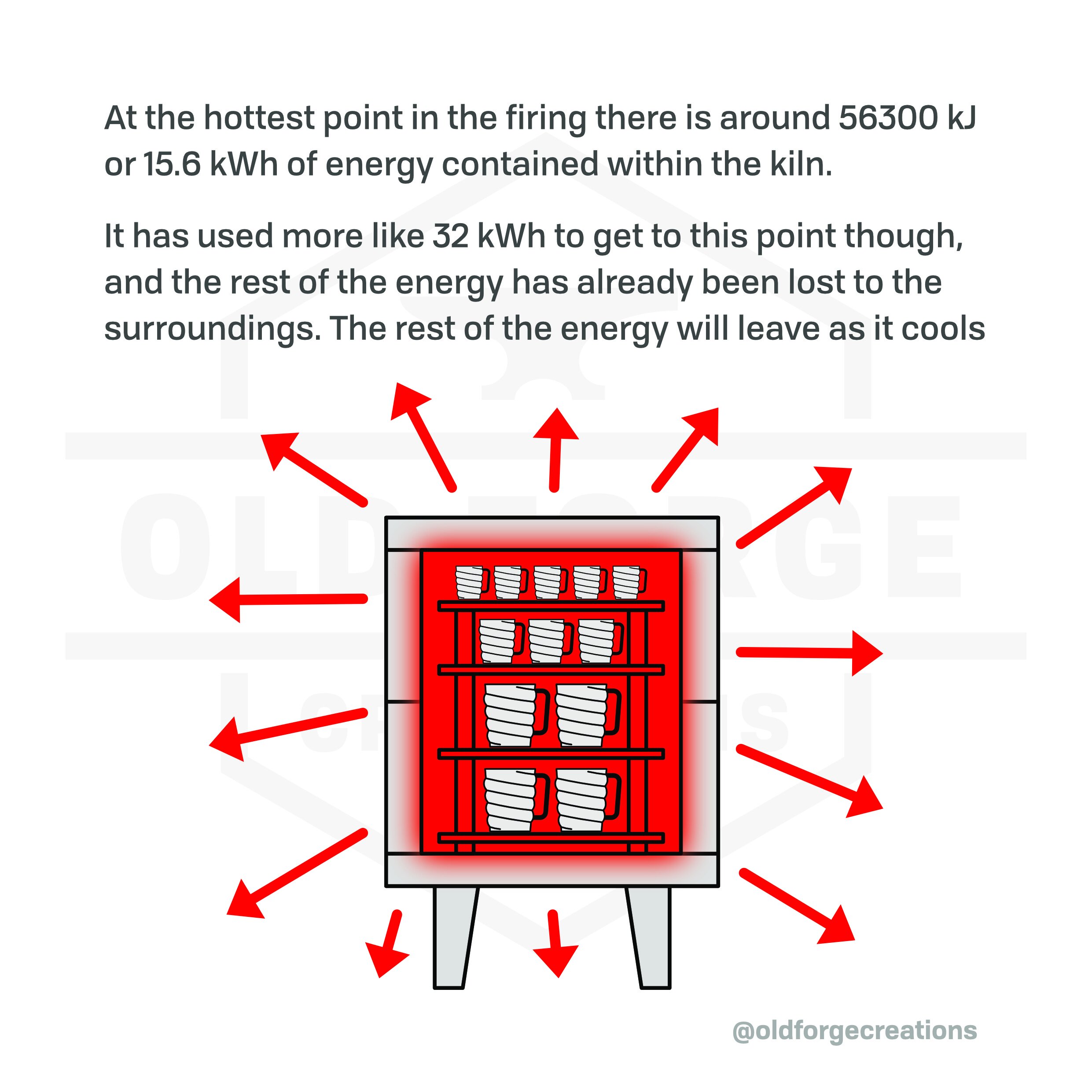Understanding Clays - CMW Course
I have just completed the Ceramic Materials Workshop - Introduction to Clays course (the lecture only version) and wanted to do a post about it while it’s still fresh in my mind.
This is a course I’ve been intending to take for a long time. Even though I work with clay daily and have tried dozen of different brands and types of premade commercial clays, I didn’t really have any understanding of what makes those clays behave differently to each other. The reason I hadn’t taken the class before is that preparing and mixing a throwable, air-free clay from powdered ingredients is a lot of work. It either requires specialist equipment (like a de-airing pugmill) or it has to be done manually, and there’s a lot of mess either way. But I need casting slip for my slipcasting projects, and it’s much easier to make casting slip than plastic clay. Not only that, the commercial casting slips are sold as powdered mixes (that you mix with water and deflocculant yourself, so saves only a small part of the effort and mess) or as premade liquid casting slips (that are more expensive, cost more to ship, and aren’t necessarily prepared the way you want them anyway).
So this seemed like the perfect time to take the course and learn about exactly what’s going on in my clay, so I can make my slip perform exactly how I want.
The Course
The course format is similar to the other CMW courses I’ve written about before. It’s a series of video lectures available to view on demand. The videos are 1-2 hours each, and there are 17 in total, which break the subject up into sensible topics and cover them in depth. There is a lecture-only version (which is what I took) for $300 and a $500 version with live hangouts and practical tests with feedback on the results.
The course covers the geology, chemistry, material properties, and practical implications of using the ingredients that go into clay bodies. There is a huge US focus on the specific brands covered, so international viewers will have to do their own research into locally available materials. I’ll add my UK spreadsheet below.
It also covers the factors that make clay bodies perform well or badly, both in the studio and in the kiln.
Key Points
I (obviously) won’t attempt to repeat everything here, but there are a few key points from the course that I wanted to touch on.
What’s the Difference Between Earthenware, Stoneware, and Porcelain?
This was a question that I’d had for a while, and the answers weren’t particularly satisfying. The most common answer was just that earthenwares were low fired (cone 06-04, 1000c), stonewares were mid to high (cone 6-10, 1200-1300c) and porcelains were high fired (cone 10, 1300c).
That is a really nice and clear distinction, especially as a beginner looking at premade glazes. It seems like there’s 3 neat categories of clay and glaze. But then I kept finding exceptions to those rules. There are clays that are described as cone 6 porcelains, and one of the clays I use is a cone 6 earthenware. Which means the terms and temperatures are less closely linked than it seems. Is there a better way to look at the distinction?
This isn’t taken directly from the course, but extrapolated from what I learnt. These are my thoughts on the distinction:
Earthenware - Earthenwares aren’t usually even attempting to be vitrified (see below). This means that a lot of clays that can actually be fired hotter can still be called earthenware. The clays are physically weaker and more porous due to the lack of vitrification. The reason for the lower firing temp is that there are iron rich clays (terracotta) and magnesium rich clays (high levels of talc) and the clays will bloat or slump if fired hotter. These clays reach their natural upper firing limit before vitrification, so it’s not even an option. That lack of vitrification also means it’s the broadest possible term and really does just apply to the firing range, you could sell a high firing clay as an earthenware and it would likely work well enough as one when fired to the lower temperature (as in, it would be solid but porous).
Stoneware - Stonewares are a broad category. In a lot of ways they’re everything other than earthenwares and porcelains. They can exist anywhere from midrange upwards (cone 4+), and should be vitrified at their target temp range. They’re often made from 70%+ clay minerals (kaolin, ball clays, etc) and the rest will be feldspar and quartz, but recipes can vary greatly and there are plenty of other things that get added at lower percentages (grog, frit, etc). There are no definitional limits on colour, texture, behaviour, etc. They can be white and smooth but are more likely to be brown/buff and have some grog added.
Porcelain - Porcelains are aiming to be very vitrified. They do this by having less clay mineral and more silica/quartz in the recipe, meaning there is literally more glass in the clay to vitrify. They also aim to have the minimum amount of iron and titanium impurities in the clay body for maximum whiteness and translucency. These two recipe considerations are what leads to a lot of the issues that porcelains are known for (awkward to work and prone to cracking/warping/slumping). Typically porcelains are cone 10 upwards, as the higher temperatures make it easier to melt the glass, but it is possible to vitrify a body at cone 6.
Vitrification
Vitrification is when something becomes glassy, and in the case of clays it refers to silica melting and sealing the internal pores. The porosity of a clay is determined by the pores, and sealing them makes a clay less absorbent. A fully vitrified clay has melted all the available silica within the clay and should be nearing 0% absorption.
This is a different concept to sintering (which is a lower temperature fusing of ingredients) and maximum firing temperature (some clay bodies are limited to firing temperatures well below their vitrification cone due to issues like bloating).
In theory a clay can be vitrified at any temperature above the minimum for the ingredients you use. This means a cone 06 body can become glassy if you use a sufficient amount of the right frit, but you risk ending up with a puddle instead of a pot. Vitrification is specific to each clay body. While similar clay bodies will have similar firing curves, there can be differences of a cone or two due to differences in the chemistry.
One recurring theme throughout the course is that Matt’s standard for vitrification is <0.5% absorption, and the frustration that cone 6 clay manufacturers have just raised their number to <3% rather than getting their clays to melt enough.
Unfortunately, there isn’t a huge amount you can do with an existing clay body. It’s not hard to design a cone 6 body that will vitrify, but it does require making your own clay from scratch.
Designing a Clay Body
Again, not even attempting to cover the info properly. One of the main considerations when creating a clay body should be the particle sizes. A diverse range of sizes will create a better body for the same underlying ingredient chemistry. Matt gives a ton of info for US clays, but thankfully that data isn’t hard to come by for local ingredients.
Here is a spreadsheet for particle size distribution of the powered clay options from Potterycrafts
There’s a real mix in the quality of the Technical Data Sheets (and that’s what you’d want to ask for if trying to get this info for your own options), so a lot of this is at least partially estimated. But the themes are clear. Ball Clays generally have a more diverse particle size distribution than Kaolins/China Clays, with more at the smallest particle sizes. A mix of several clays can give a much smoother distribution line than any individual clay.
There are other considerations to making a body, such as how you mix and prepare it. The course goes into a lot of detail about the options and why they behave the way they do, but essentially the most thorough mixing and even distribution of the different particle sizes throughout the body will give the best durability and plasticity.
Should I Take the Course?
It’s a great course, but it’s also a non-trivial amount of money, so it’s not going to be for everybody.
Are you thinking of making your own clay/slip? You should absolutely take the course, and you should probably take the full version with labs and hangouts.
Are you a full time ceramicist who has pieces fail due to clay issues? You should take the course, but maybe the lecture only version. There is a lot of practical and applicable information that will help understand why issues arise and how to avoid them. $300 isn’t that many failed pieces, so any reduction in your loss rate should pay for the course pretty quickly.
Are you part time or just doing this for fun with no specific interest in making a clay body? Only do the course if the cost isn’t prohibitive for you. If you don’t really have $300 to spare, then you likely won’t get sufficient value from the course to justify the cost.









